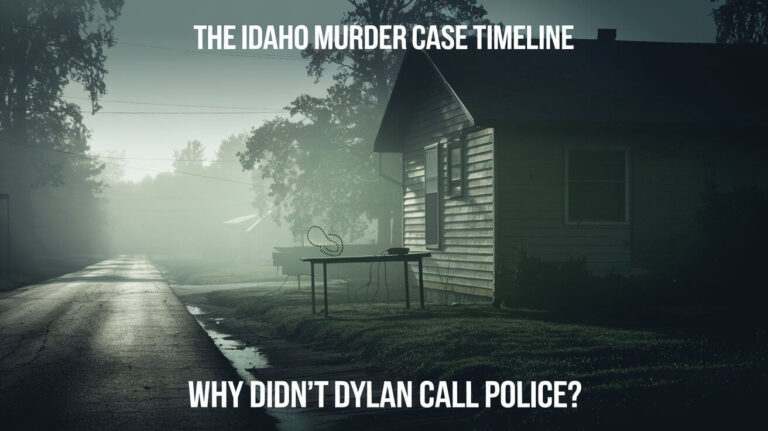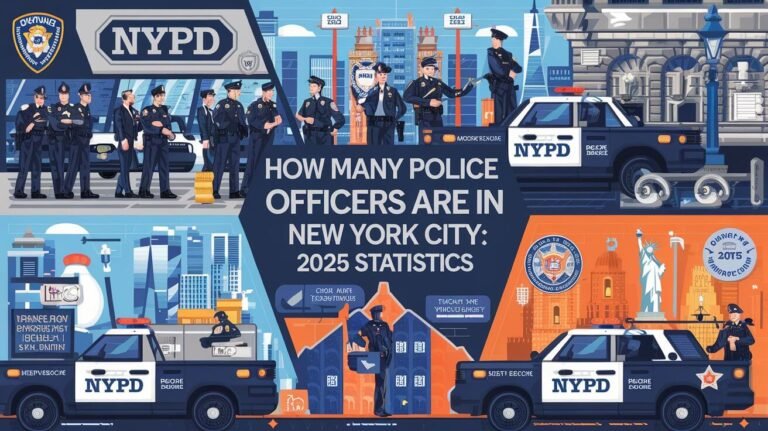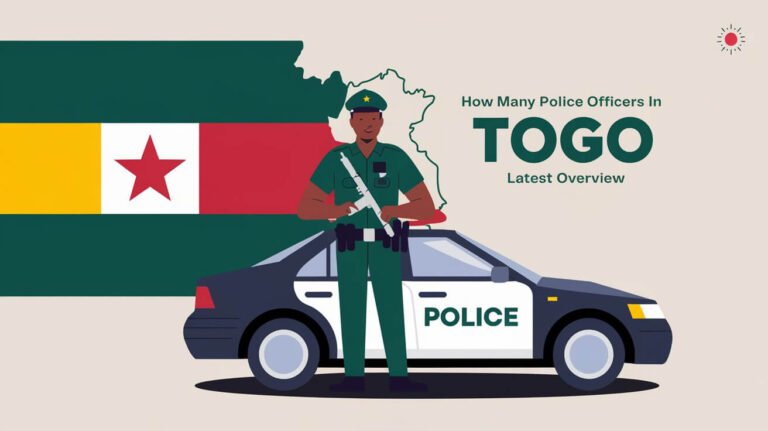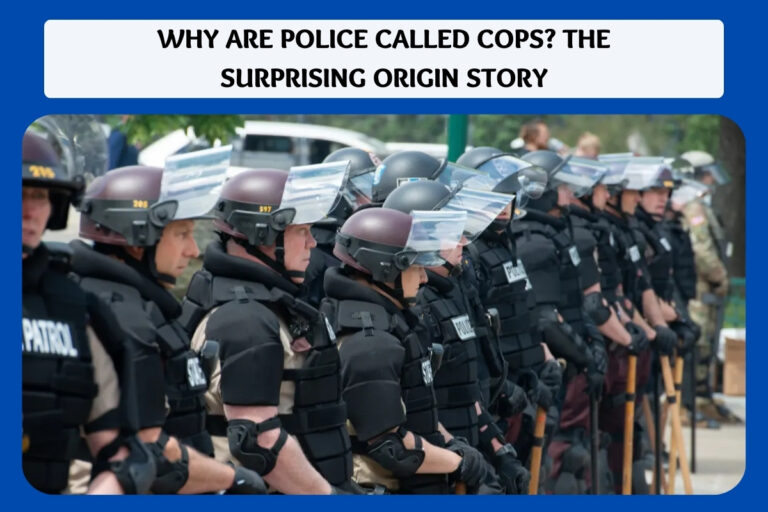How Many Police Officers Lesotho In 2025
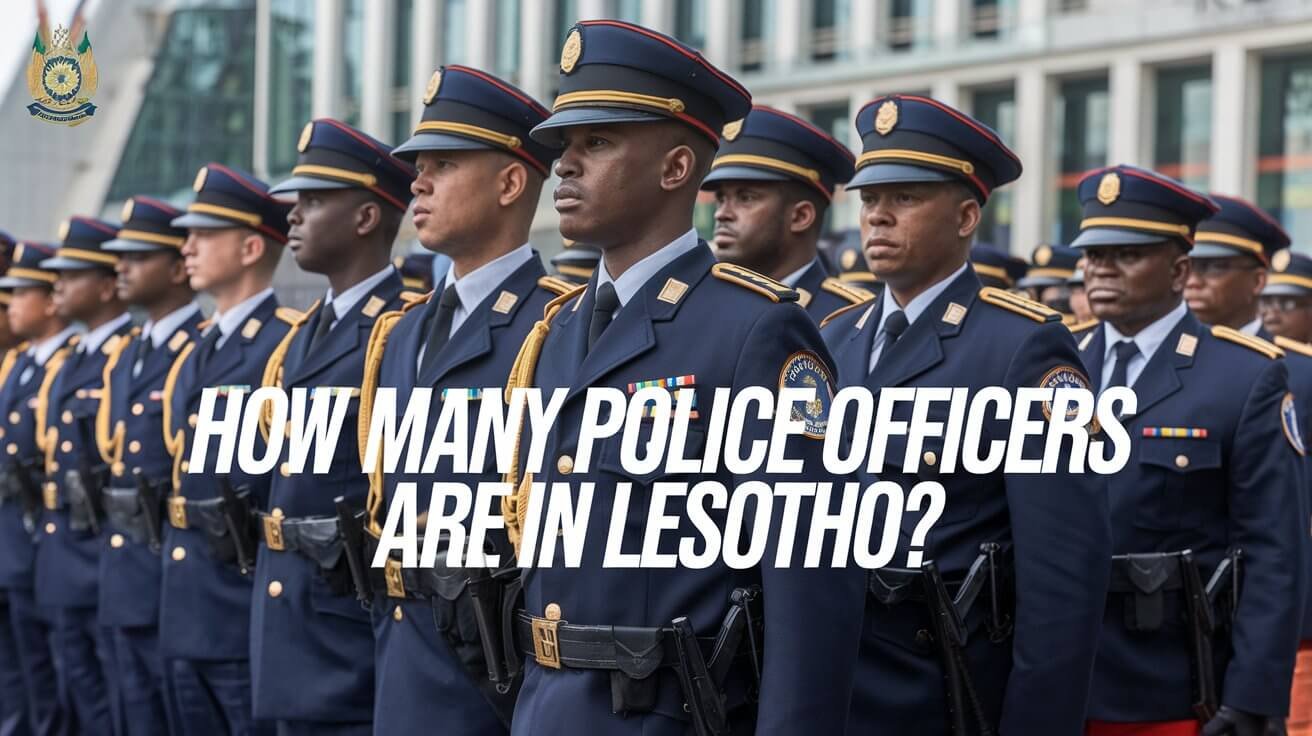
Lesotho, a country in Southern Africa, has a national police force called the Lesotho Mounted Police Service. It was set up in 1872. The force has changed a lot over time, adapting to Lesotho’s needs.
In 2012, there were 2,404 active police officers in Lesotho. This shows how important they are for keeping the country safe. The number of police officers per person in Lesotho is 125 per 100,000. This is lower than the global average, showing the need for good policing in Lesotho.
Lesotho Mounted Police Service is in charge of keeping the population safe. It has a structure and way of working that fits Lesotho’s unique situation. As the main police force, it works hard to keep everyone safe and secure.
The police focus on working with the community and preventing crime. This way, they aim to give the best police service to the people of Lesotho.
Lesotho Police Force Statistics
Lesotho, a country in southern Africa, has its own set of police statistics. The police force has 2,404 active officers. This means there are 125 officers for every 100,000 people. This number is lower than the global average of 300 officers per 100,000 people, as reported by the United Nations.
Knowing the police statistics in Lesotho helps us understand its law enforcement. Some important points to note include:
- The current number of active officers in the police force.
- The officer-to-population ratio and how it compares to international standards.
- Regional distribution data, which shows how the police force is allocated across different areas of the country.
Police in Lesotho are spread out across various regions. Most officers are in the capital, Maseru. This is because the capital needs more policing. Looking at these statistics helps us see what’s working and what’s not with the Lesotho police force.
Current Active Officers
The number of active officers in the Lesotho police force is key. With 2,404 officers, they work hard to keep the country safe.
Officer-to-Population Ratio
The officer-to-population ratio in Lesotho is 125 officers per 100,000 people. This is lower than the global average. It might suggest the need for more police in Lesotho.
Regional Distribution Data
Where the police are stationed is important. Most officers are in Maseru, the capital. Other areas also have a good number of police.
Police Force Structure in Lesotho
The police in Lesotho are led by the Commissioner. They make important decisions for the whole force. The police are split into different departments, like the Criminal Investigation Division and the Traffic Department.
These departments work together to keep the country safe. They focus on enforcing laws effectively.
The police are part of Lesotho’s security team. This team also includes the Lesotho Defense Force, the National Security Service, and the Lesotho Correctional Service. The Lesotho Mounted Police Service (LMPS) handles internal security. The Lesotho Defense Force (LDF) looks after external security and helps the police when needed.
This setup helps the country have a strong security system. It ensures law enforcement and security work well together.
Some important parts of the police include:
- Criminal Investigation Division: handles investigations and prosecutions
- Traffic Department: responsible for road safety and traffic management
These departments are key to the police’s success. They help keep Lesotho safe and secure. The police aim to provide a safe place for everyone in Lesotho.
Historical Development of Lesotho Law Enforcement
Lesotho’s police history began in 1872, during the colonial era. Back then, the police mainly kept the peace. Over time, the police force has seen many changes.
The colonial era greatly shaped Lesotho’s police. They followed the British model, focusing on order and silencing dissent. After gaining independence, the police underwent big reforms. They started new training and broadened their role.
Key Events in Lesotho’s Police History
- Establishment of the police force in 1872 during the colonial period
- Transition to independence and introduction of new training programs
- Expansion of the force’s mandate to include community policing and crime prevention
Today, Lesotho’s police focus on community and preventing crime. Despite tough challenges like limited resources, they’re dedicated to protecting the people.
| Year | Event | Impact on Police Force |
|---|---|---|
| 1872 | Establishment of police force | Introduction of law and order in the territory |
| 1966 | Lesotho gains independence | Introduction of new training programs and expansion of force’s mandate |
| Present day | Continued evolution of police force | Focus on community policing and crime prevention |
Geographic Distribution of Police Services
Lesotho’s police services cover the whole country. They focus on keeping both cities and rural areas safe. Most officers are in Maseru, the capital, because of its big population and crime.
But, police stations and posts are set up in other areas too. This way, everyone can get help from the police, no matter where they are.
The police spread out based on Lesotho’s 10 districts. Each district has its own police headquarters. This helps the police use their resources better and respond fast to emergencies.
Some interesting facts about Lesotho include:
- Population: about 2 million people
- Area: 30,355 sq. km
- Major cities: Maseru, Teyateyaneng, Leribe, Mafeteng, Mohale’s Hoek
Police in Lesotho want to keep everyone safe. They focus on working with the community and stopping crime. By covering the whole country, they aim to keep Lesotho safe for everyone.
| District | Population | Police Stations |
|---|---|---|
| Maseru | 250,000 | 5 |
| Teyateyaneng | 100,000 | 2 |
| Leribe | 200,000 | 3 |
| Mafeteng | 150,000 | 2 |
| Mohale’s Hoek | 120,000 | 1 |
Police Training Facilities and Programs
Lesotho’s police force has a training college. It offers basic and specialized training to officers. The focus is on law enforcement skills and knowledge.
The college runs various training programs. These include basic training, specialized units training, and leadership development. They aim to improve police training in Lesotho.
The training programs help address community needs. For example, there’s a high rate of violence against women. In Lesotho, 37% of women aged 18 to 49 have faced physical violence, and 26% have faced sexual violence.
To tackle these issues, the police force has joined safeguard training workshops. A total of 79 officers have attended these workshops.
Basic Training Requirements
Basic training for police officers in Lesotho is thorough. It covers law enforcement procedures, human rights, and community policing. The goal is to equip officers with the skills needed to serve the community well.
Specialized Units Training
Officers also receive specialized units training. This focuses on areas like criminal investigation and border control. It helps officers develop specific skills and knowledge, boosting the police force’s overall capacity.
Ongoing Professional Development
Ongoing professional development is key for police officers in Lesotho. The training college offers programs to support this. These include leadership development, mentoring, and coaching. They aim to improve the professionalism and effectiveness of police officers.
Police Force Budget and Resources
The police force’s budget is key to its operations. It shows how much money the government gives them. In Lesotho, the police get vehicles and equipment with this money. It’s important for them to do their job well and help the public.
Lesotho’s police budget is smaller compared to other countries. For example, the U.S. spends $428.66 billion on its police, which is 2% of its GDP. Lesotho’s budget is a smaller part of its GDP. But, the police in Lesotho make a big difference in keeping the country safe.
The police in Lesotho have many resources. They have vehicles for moving around and equipment for solving crimes. They also have technology for talking and analyzing data. Plus, they get training to improve their skills.
These resources help the police do their job well. The budget in Lesotho pays for all these things. It helps the police work efficiently and help the public.
| Country | Police Budget | GDP Percentage |
|---|---|---|
| United States | $428.66 billion | 2% |
| Costa Rica | $1.5 billion | 2.5% |
| Russia | $38.39 billion | 2.26% |
Police in Lesotho are very important for keeping the country safe. They have a good budget and the right resources. They work with other countries in the Southern African Regional Police Chiefs Cooperation Organisation (SARPCCO). This helps them share ideas and get better at their job.
Specialized Units and Departments
Lesotho’s law enforcement has many specialized units. They play a key role in supporting the force’s work. These units help with crime investigation, border control, and special operations.
Police in Lesotho have different specialized units. These include the Criminal Investigation Division, Border Control Units, and Special Operations Teams. They help with tasks like tactical operations and crisis management. For example, the Special Task Force has 93 operators and uses various equipment.
Functions of Specialized Units
- Resolving high-risk situations beyond ordinary police capacity
- Combatting urban and rural terror
- Providing specialized rescue services during natural disasters
- Providing operational, tactical, and continuation training to members
- Providing specialized policing services to neighboring countries
These specialized units boost the Lesotho police force’s abilities. They are key in handling complex and risky situations. Their role is vital for keeping Lesotho safe and secure.
| Unit | Function | Equipment |
|---|---|---|
| Special Task Force | High-risk operations | Pistols, sub-machine guns, assault rifles |
| Criminal Investigation Division | Crime investigation | Forensic equipment, investigative tools |
| Border Control Units | Border security | Surveillance equipment, patrol vehicles |
Regional Comparison of Police Forces
Lesotho’s police force is part of a larger group of law enforcement agencies. Looking at different police forces shows us how they are structured, funded, and equipped. For example, the South African Police Service is huge and well-funded.
Lesotho’s police face special challenges like limited resources and a high crime rate. But, the country has made big strides, like starting new training programs and expanding their role. Comparing police forces helps find the best ways to improve.
| Country | Police Force Size | Budget |
|---|---|---|
| Lesotho | 4,000 officers | $10 million |
| South Africa | 180,000 officers | $3 billion |
Comparing police forces also shows where they can work together. Sharing knowledge and resources can help tackle common problems. This includes joint training, sharing intelligence, and working together on operations.
Current Challenges for Lesotho Police
The Lesotho police face big hurdles in keeping the peace. They struggle with not enough resources, old buildings, and training needs. The police are trying to fix these problems by starting new training and getting more resources.
Some big challenges for the Lesotho police include:
- Resource limitations: They don’t have enough tools and people to fight crime well.
- Infrastructure issues: Their buildings and cars need fixing and updating.
- Training gaps: They need more training to handle issues like police brutality and get better at their jobs.
Only one-third of Basotho people trust the police. The public doesn’t have much faith in the police’s professionalism and respect for people’s rights. The Lesotho Mounted Police Service (LMPS) has long faced problems like police brutality, not stopping crime, and not protecting property. To tackle these issues, the LMPS is working to lower crime, like murders, by enforcing rules and doing more checks.
| Challenge | Description |
|---|---|
| Resource limitations | Lack of enough resources, including equipment and personnel |
| Infrastructure issues | Need for repair and upgrade of police buildings and vehicles |
| Training gaps | Need for more training to tackle issues like police brutality |
The police are trying to overcome these challenges and do a better job. They aim to win back the public’s trust and improve how they interact with people. The LMPS has a cybercrime unit to deal with online crimes. They also work to stop police from working with criminals, with steps in place for those who do.
Future Expansion Plans
Police in Lesotho are working hard to grow their services. They want to meet the community’s needs better. This is key for good law enforcement in the country.
They plan to open new police stations and hire more officers. This will make the force stronger.
Some important parts of their plans are:
- Setting up new police stations in rural areas to make it easier for people to get help.
- Starting new training for officers to improve their skills.
- Hiring more officers to boost the police presence and connect better with the community.
The aim is to give the police in Lesotho the tools they need to serve the public well. The government hopes this will make the country safer and more secure. This is important for Lesotho’s growth and development.
Final Note
The Lesotho police force is key to keeping the country safe. It has a long history and is dedicated to serving the public. We’ve looked at its structure, stats, and important roles in this article.
Despite big challenges like limited resources and training needs, the police is making progress. They are working hard to improve and serve the community better.
The police has changed a lot over the years, getting better with new ideas and technology. They plan to grow and get even better at keeping people safe. This includes improving how they work with the community and following human rights.
Lesotho police force is a big part of keeping the country safe. Their efforts to tackle challenges and build a safer future are truly commendable. With more training, resources, and community support, they can regain trust and keep everyone safe.
Common Queries
How many active police officers are in the Lesotho Mounted Police Service?
In 2012, the Lesotho Mounted Police Service had 2,404 active officers.
What is the officer-to-population ratio in Lesotho?
The United Nations says the average number of police per 100,000 people is 300. Lesotho has 125 officers per 100,000 people.
How is the Lesotho Mounted Police Service organized?
The top officer is the Commissioner, who oversees the whole force. The force has several departments, like the Criminal Investigation Division and Traffic Department.
What is the history of the Lesotho Mounted Police Service?
The Lesotho Mounted Police Service started in 1872 during the colonial era. It has changed a lot, becoming a civilian force after independence.
How is the geographic distribution of police services in Lesotho?
Police cover the whole country, focusing on cities and rural areas. They have many stations and posts to reach everyone.
What kind of training do Lesotho police officers receive?
Police get training at a college to learn their jobs well. They study basic skills, specialized units, and leadership.
How is the Lesotho Mounted Police Service’s budget and resources?
Police budget is key for their work. They have vehicles, equipment, and technology to help them serve the public.
What are the specialized units and departments within the Lesotho Mounted Police Service?
Force has units like the Criminal Investigation Division and Border Control Units. They help with operations and offer special services.
How does the Lesotho Mounted Police Service compare to other regional police forces?
The Lesotho police are compared to others, like the South African Police Service. They face challenges like limited resources but have made progress.
What are the current challenges facing the Lesotho Mounted Police Service?
Police face challenges like limited resources and training gaps. These affect their ability to serve the public and keep order.
What are the future expansion plans for the Lesotho Mounted Police Service?
The police plan to open new stations, introduce training, and hire more officers. They aim to meet the community’s growing needs.

